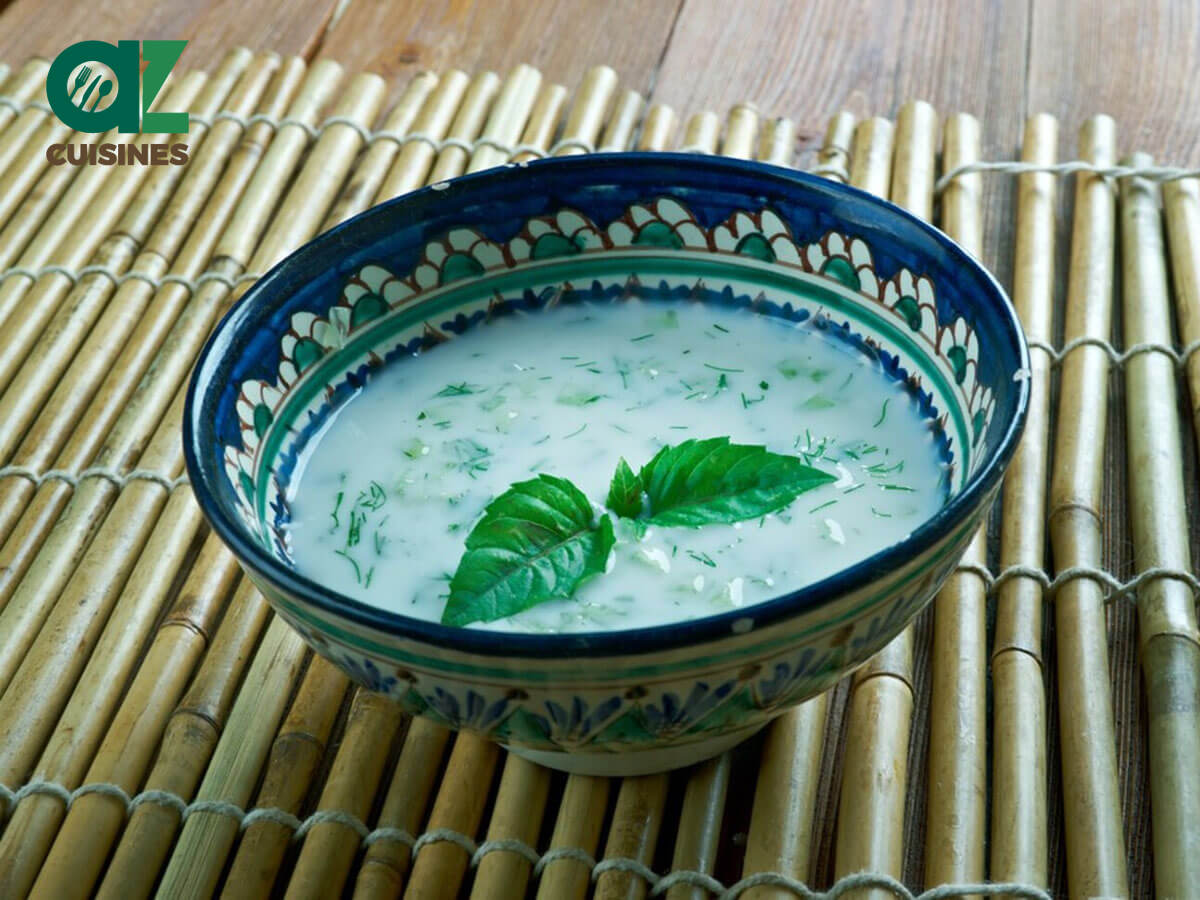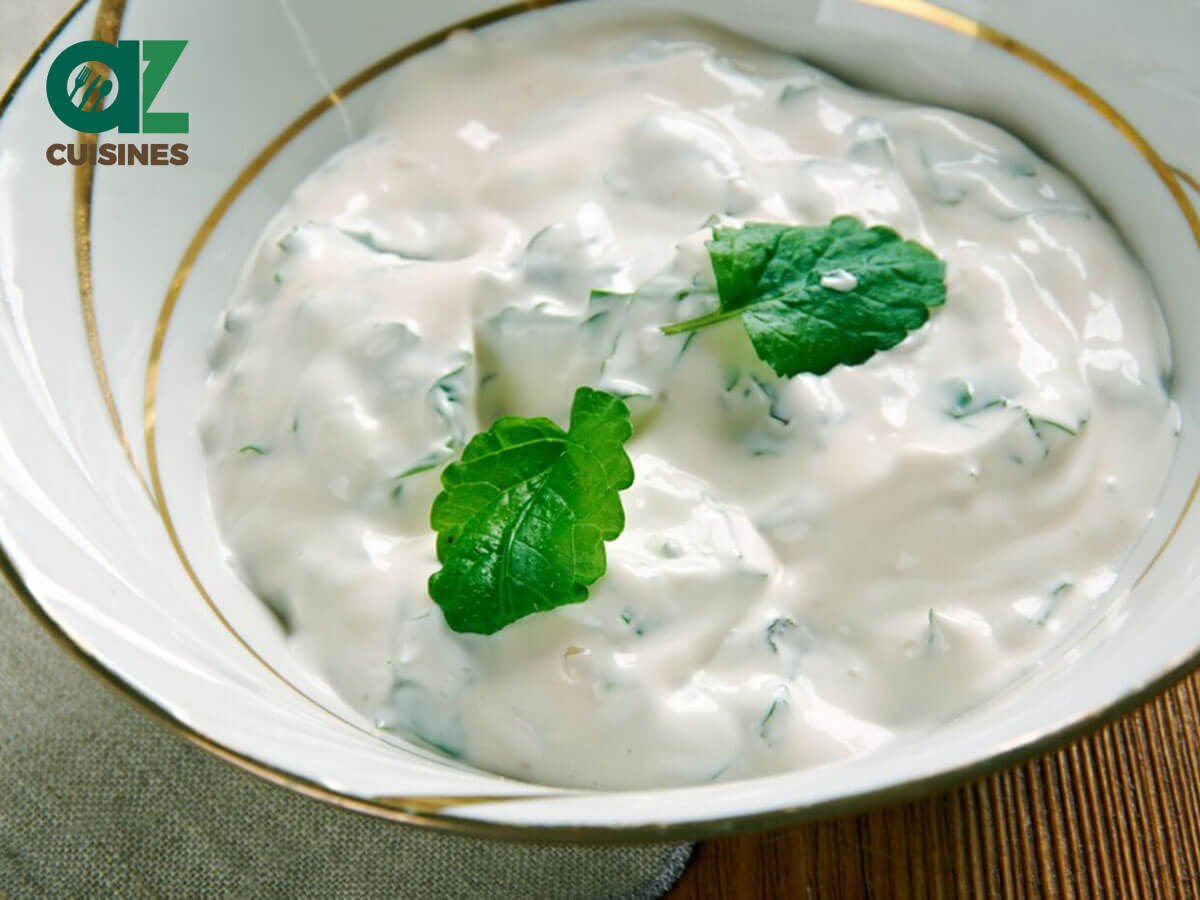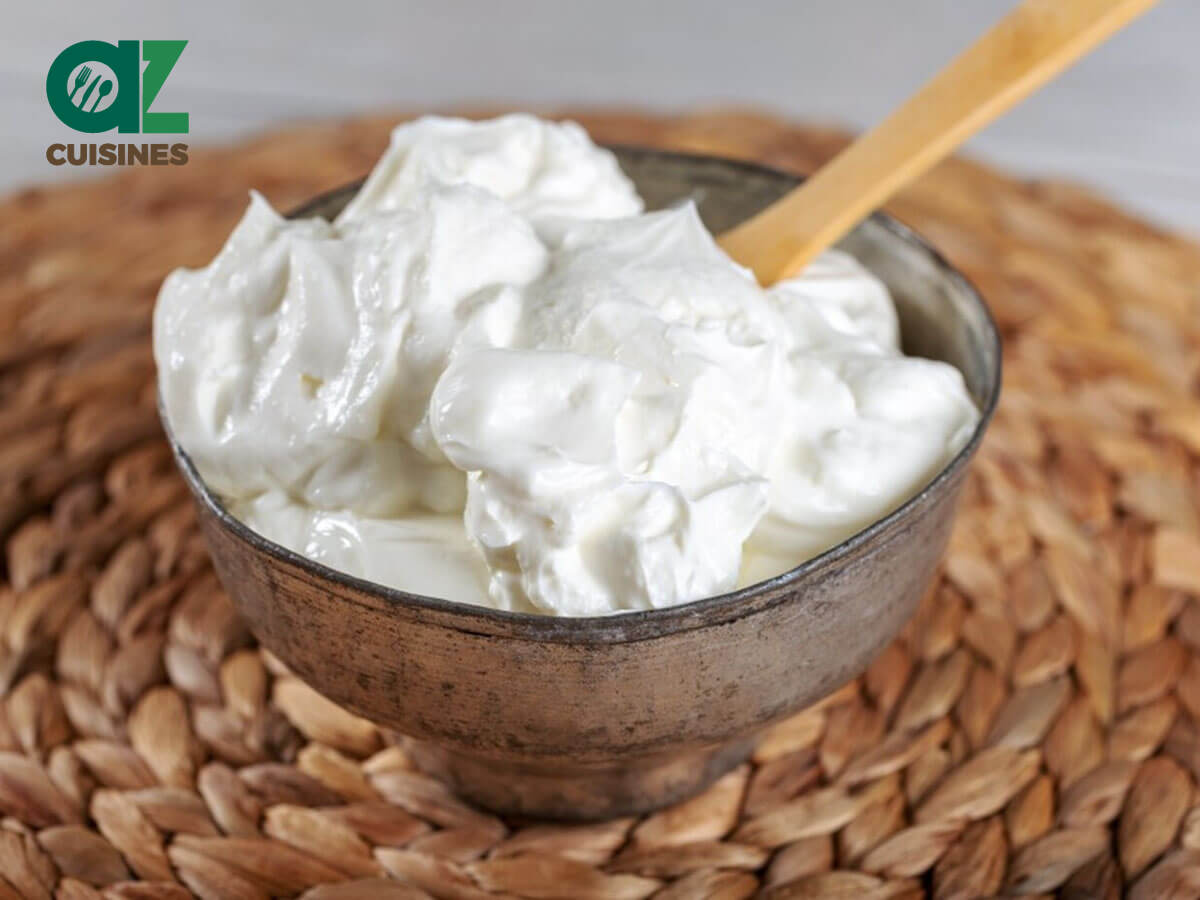Suzma: Basic Information
Pronunciation
Alternative Name(s)
Dish Type
Course
Mealtime
Popular Variations
Suzma: Ingredients and Preparation
Main Ingredients
Main Cooking Method
Preparation Process
Suzma: A Deep Dive
Cultural Significance
Taste
Texture
Aroma
Color
Serving Style
Serving Temperature
Accompaniment
Occasions
Seasons
Special Diets
Calories
Popularity
Popular Similar Dishes
- Greek Yogurt
- Labneh
- Skyr
- Quark
Popular Dining Area
Suzma is the Central Asian version of strained yogurt and a popular ingredient in Uzbekistan, Tajikistan, Kazakhstan, Kyrgyzstan, Turkmenistan, Afghanistan, and several Turkic republics in Russia.
The main ingredient of suzma is qatiq, a yogurt-like fermented milk product made from cow, sheep, or even mare milk in Central Asia. People prepare suzma by draining qatiq through a cheesecloth or cotton fabric for hours.
Suzma has the consistency of cream cheese and a rich, tangy flavor. The strained yogurt appears in several Central Asian specialties, such as chalap (a dairy-based beverage or cold soup) and ayran (a cold yogurt-based beverage).
Many dishes, like chuchvara (meat dumplings), samsa (savory pastry), and tandyr non (disc-like Central Asian bread), have suzma as a side dish. When suzma is drained further until dried, it becomes kashk (or qurut), a type of dried yogurt with many culinary applications.
There are many things to learn about suzma, such as its pros and cons and similar dairy products. Continue reading, and you will know about these facts.
Suzma Images
Pros and Cons of Eating Suzma
Below are the prominent strengths and weaknesses of suzma.
Pros
Cons
After understanding the advantages and disadvantages of suzma, why don’t you check out common questions people usually ask about strained yogurt?












Adam Sam
Senior Food and Drink Editor
Expertise
Food Writer & Recipe Developer, Recipe Tester, Bartender, Cooking-video Maker, Editor In Chief
Education
Adam Sam, an experienced food writer and recipe developer, is passionate about blending diverse culinary traditions, national dishes, and innovative beverages, showcasing his proficiency in both traditional and modern recipe testing.
As the Editor-in-Chief, he elevates culinary content from street food to fine dining, focusing on Western cuisine and types of drinks at azcuisines.com, and is professional in creating engaging cooking videos that simplify complex dishes and ingredients.
His passion for food is evident in his writing, where he uniquely merges various cultures, traditions, and contemporary trends, skillfully combining classic recipes with modern cooking methods.